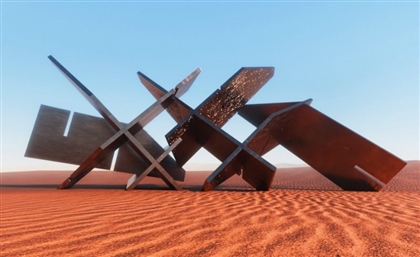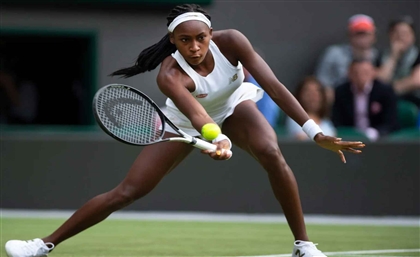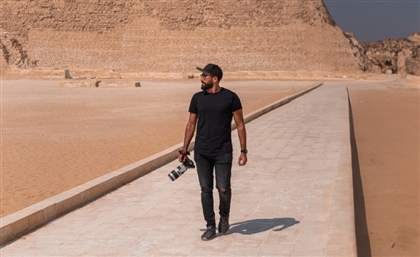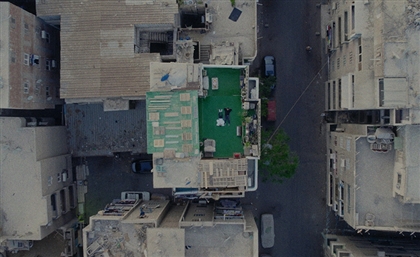Anoud Al Zaben Provides Table Setting Inspiration for Your Next Iftar
The designer and architect has created two beautiful Iftar tables in her new collaboration with Matches.
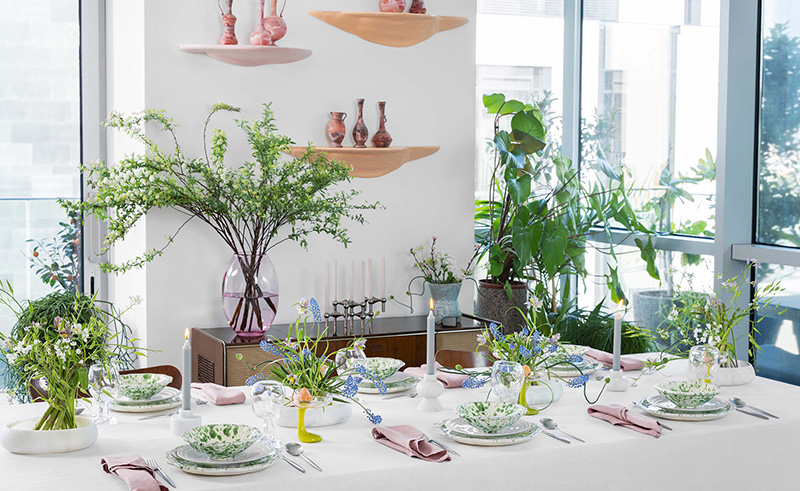
Ramadan Iftars are more than a meal – for Anoud Al Zaben, they are the perfect opportunity to celebrate the sanctity of food, friends and family through the art of table settings. This year, the architect and designer has collaborated with Matches, the luxury e-tailer, to create two beautiful Ramadan tablescapes and share the methodology she uses to craft show stopping dinner arrangements.
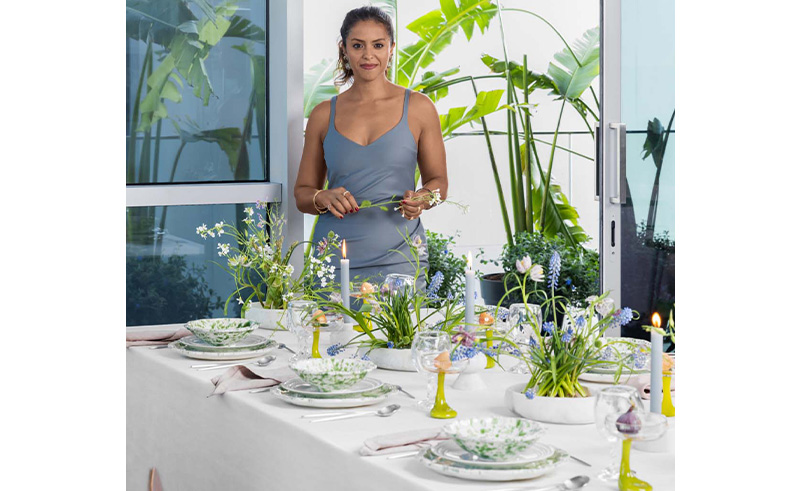 For the collaboration, the architect and designer decked two different tables in two very different spreads. The first communicated the communal and contemplative aspects of Ramadan in rich, earthen colours. The second table celebrated the joyful atmosphere of Eid with airy settings that featured pops of spring greens and light blues. In creating these settings, Al Zaben embraced an organic, exploratory process.
For the collaboration, the architect and designer decked two different tables in two very different spreads. The first communicated the communal and contemplative aspects of Ramadan in rich, earthen colours. The second table celebrated the joyful atmosphere of Eid with airy settings that featured pops of spring greens and light blues. In creating these settings, Al Zaben embraced an organic, exploratory process.
 “When setting the table, I enjoy experimenting with creative combinations,” Al Zaben tells SceneHome. “Sometimes, I purchase items that catch my eye without having a specific plan in place, letting the table evolve organically.”
“When setting the table, I enjoy experimenting with creative combinations,” Al Zaben tells SceneHome. “Sometimes, I purchase items that catch my eye without having a specific plan in place, letting the table evolve organically.”
 The results of this process are gorgeous, detailed tablescapes that you’d love to sit down at. If you’re looking to create similarly stunning settings this Ramadan season, Anoud recommends starting by seeking inspiration from your environment.
The results of this process are gorgeous, detailed tablescapes that you’d love to sit down at. If you’re looking to create similarly stunning settings this Ramadan season, Anoud recommends starting by seeking inspiration from your environment.
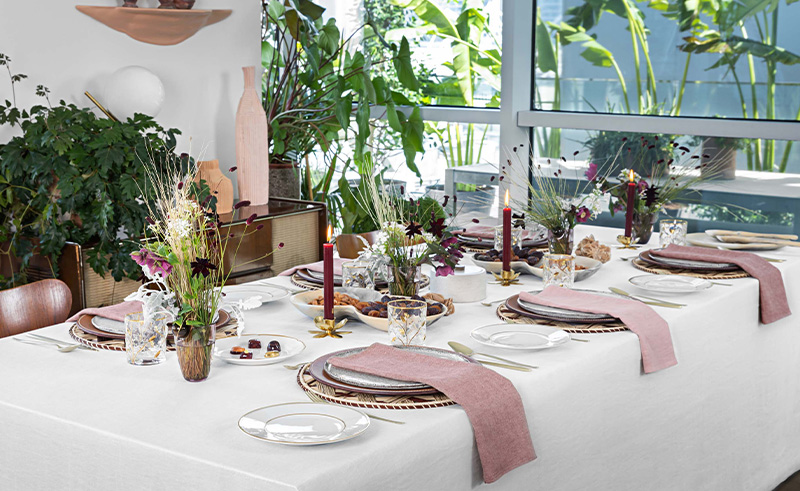 Unlike many holidays, Ramadan falls at a different time every year. Anoud recommends incorporating natural elements into Iftar tablescapes, such as blossoms and fruits, that are freshly available during the Holy Month, whenever that may be. This year, Annoud suggests celebrating the arrival of spring on your Ramadan tables. Branches of cherry and almond blossom alongside perennial blooms like iris and magnolia are one way to celebrate this gorgeous season. Using blooms from your own garden are a great way to give your arrangements a personal touch.
Unlike many holidays, Ramadan falls at a different time every year. Anoud recommends incorporating natural elements into Iftar tablescapes, such as blossoms and fruits, that are freshly available during the Holy Month, whenever that may be. This year, Annoud suggests celebrating the arrival of spring on your Ramadan tables. Branches of cherry and almond blossom alongside perennial blooms like iris and magnolia are one way to celebrate this gorgeous season. Using blooms from your own garden are a great way to give your arrangements a personal touch.
 This embrace of the natural world showed itself on both of her Ramadan tables. In her table setting for a Ramadan night with friends and loved ones, Al Zaben placed four small arrangements of wildflowers flowers along the length of her table. Each of these bouquets featured burgundy blooms mixed with tall glasses and delicate white blossoms. For her Eid table, the designer chose arrangements of alliums, hyacinths, and – unexpectedly – asparagus stalks to adorn her table.
This embrace of the natural world showed itself on both of her Ramadan tables. In her table setting for a Ramadan night with friends and loved ones, Al Zaben placed four small arrangements of wildflowers flowers along the length of her table. Each of these bouquets featured burgundy blooms mixed with tall glasses and delicate white blossoms. For her Eid table, the designer chose arrangements of alliums, hyacinths, and – unexpectedly – asparagus stalks to adorn her table.
 Once your centrepieces have been chosen, it’s time to select glassware and ceramics to complement your natural accents. This practice of matching ceramics and pottery to organic materials was a habit Al Zaben developed as a child tasked with setting the table on her family’s farm in rural Jordan.
Once your centrepieces have been chosen, it’s time to select glassware and ceramics to complement your natural accents. This practice of matching ceramics and pottery to organic materials was a habit Al Zaben developed as a child tasked with setting the table on her family’s farm in rural Jordan.
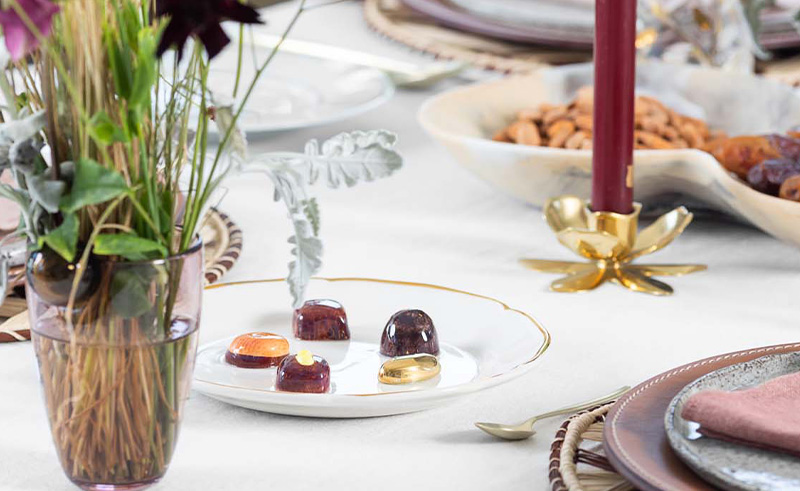 For her cosy Ramadan nights table, sparkling porcelain Ralph Lauren plates rimmed in gold sitting atop ceramic dinner plates in neutral, earthy colours. Pops of burgundy and gold appear throughout the table, matching the colours in her bouquets. Small maroon candles, sat in gold-plated Trudon holders, bring an intimate feeling to the beautiful spread.
For her cosy Ramadan nights table, sparkling porcelain Ralph Lauren plates rimmed in gold sitting atop ceramic dinner plates in neutral, earthy colours. Pops of burgundy and gold appear throughout the table, matching the colours in her bouquets. Small maroon candles, sat in gold-plated Trudon holders, bring an intimate feeling to the beautiful spread.
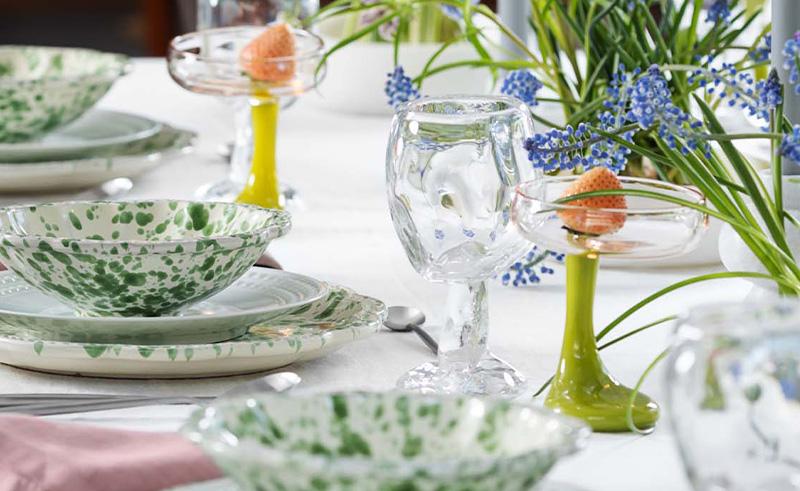 Al Zaben’s second table’s settings play with the whimsy found in her eclectic bouquets. This table’s arrangement is playful and light, with green speckled ceramic dinner plates layered with white porcelain dishes. For an eclectic touch, Al Zaben chose to incorporate Helen Mardahl’s lime green-stemmed cocktail glasses at each place setting, each cradling a tiny pink strawberry.
Al Zaben’s second table’s settings play with the whimsy found in her eclectic bouquets. This table’s arrangement is playful and light, with green speckled ceramic dinner plates layered with white porcelain dishes. For an eclectic touch, Al Zaben chose to incorporate Helen Mardahl’s lime green-stemmed cocktail glasses at each place setting, each cradling a tiny pink strawberry.
 With these two vastly different table settings, Al Zaban reminds us that there is no one way to celebrate the Holy Month – or to set the table.
With these two vastly different table settings, Al Zaban reminds us that there is no one way to celebrate the Holy Month – or to set the table.
- Previous Article Italian-Palestinian Duo No Input Debuts Eponymous Electro EP
- Next Article Travel Across History on Egypt's Most Iconic Bridges
Trending This Week
-
Dec 12, 2025








